The State of AI in 9 Charts
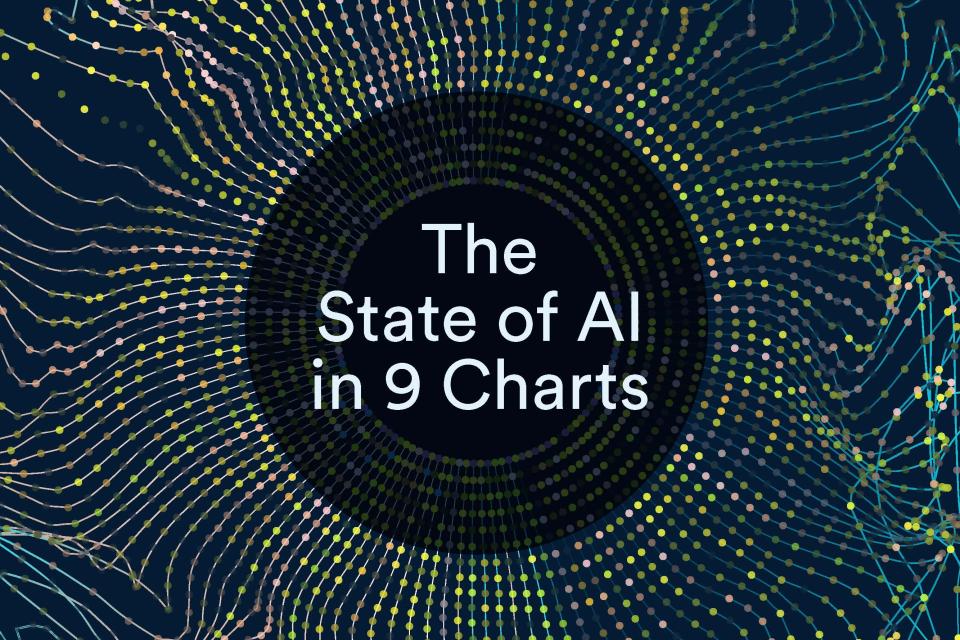
On March 16, Stanford HAI released the 2022 AI Index, the fifth annual report analyzing AI’s impact and progress year-over-year. The index is an independent program developed by an interdisciplinary team at HAI in partnership with academia, industry, and government. It analyzes and distills trends in the industry, from investment and startups to technical capability, education and public policy.
Top trends this year include a steep uptick in private investment, impressive technical achievements, and a new level of attention to issues of fairness and bias (read the top takeaways).
For a quick look at the biggest takeaways, scroll through these nine charts highlighting the year in AI.

1. What are the top skills most requested by employers?
The share of AI job postings among all job postings in 2021 was greatest for machine learning skills (0.6% of all job postings), followed by artificial intelligence (0.33%), neural networks (0.16%), and natural language processing (0.13%). Postings for AI jobs in machine learning and artificial intelligence have significantly increased in the past couple of years. Machine learning jobs are at nearly three times the level they reached in 2018, while artificial intelligence jobs are at around 1.5 times the level.
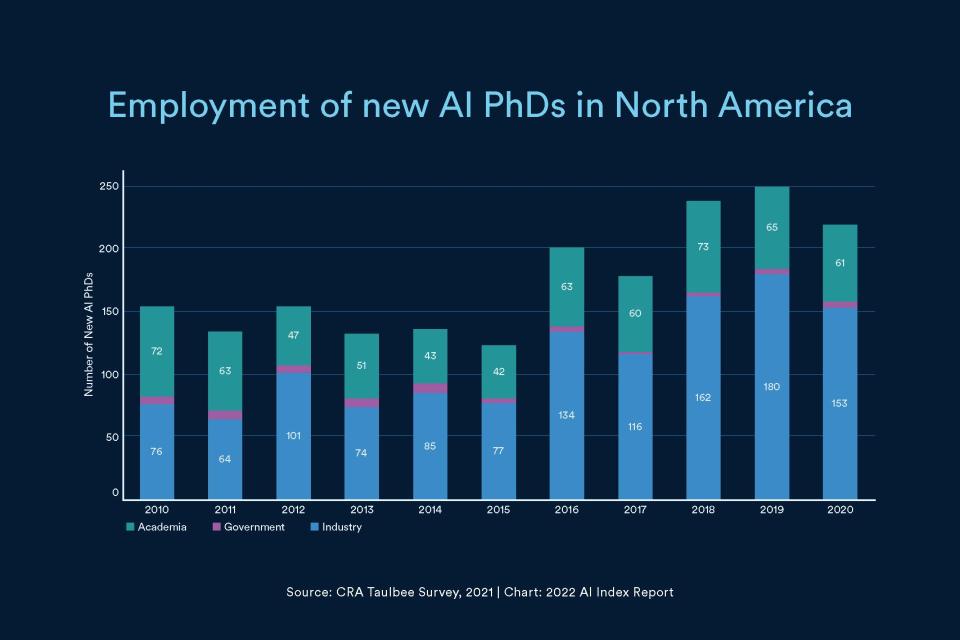
2. Where do AI experts work?
The past 10 years shows more people are earning AI PhDs. The majority in the U.S. head to industry while a small fraction take government jobs.
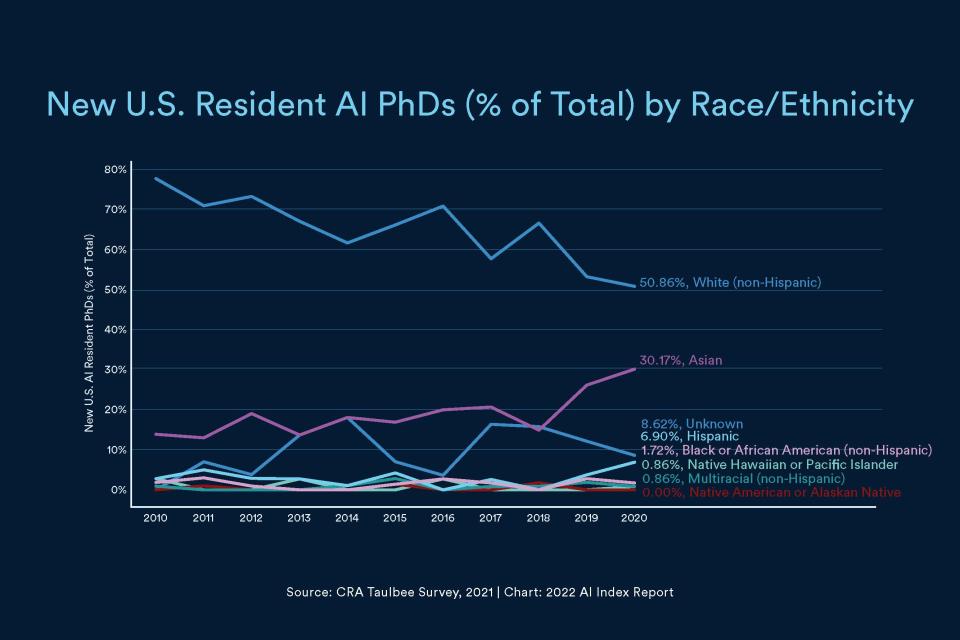
3. A serious diversity shortage
Among new AI PhDs from 2010 to 2020 who are U.S. residents, the largest percentage has been non-Hispanic white and Asian—65.2% and 18.8% on average. By comparison, around 1.5% were Black or African American (non-Hispanic) and 2.9% were Hispanic on average over the past 11 years. In the past decade, the percentage of new Black or African American and Hispanic computing PhDs dropped significantly.
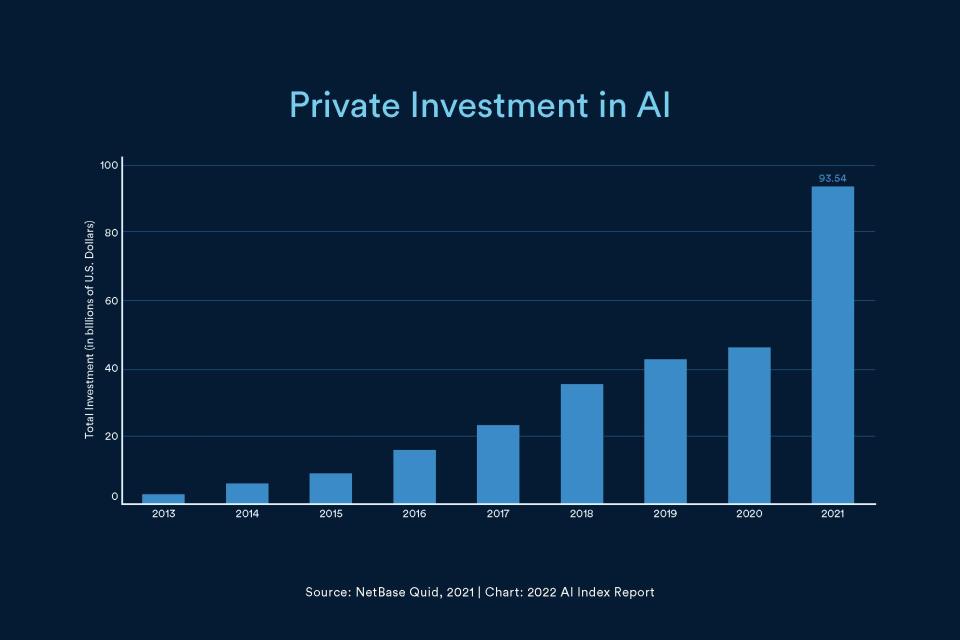
4. Private investment booms
In 2021, global private investment in AI totaled around $93.5 billion, which is more than double the total private investment in 2020. That marks the greatest year-over-year increase since 2014 (when investment from 2013 to 2014 more than doubled).
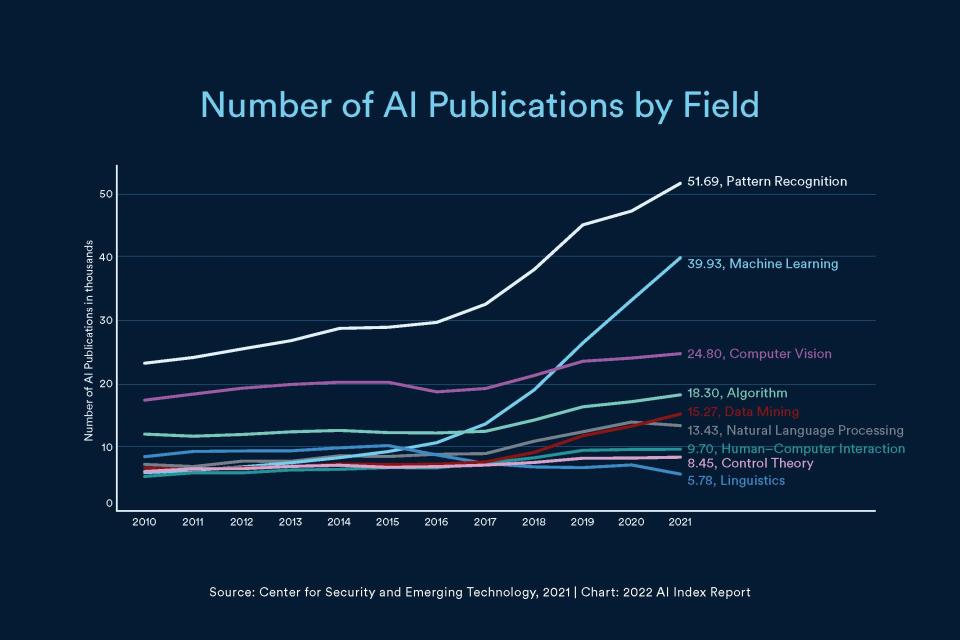
5. Where is research concentrated in AI?
More scholars are focusing on pattern recognition and machine learning. Publications in these two areas have more than doubled since 2015. Other areas strongly influenced by deep learning, such as computer vision, data mining and natural language processing, have shown smaller increases.
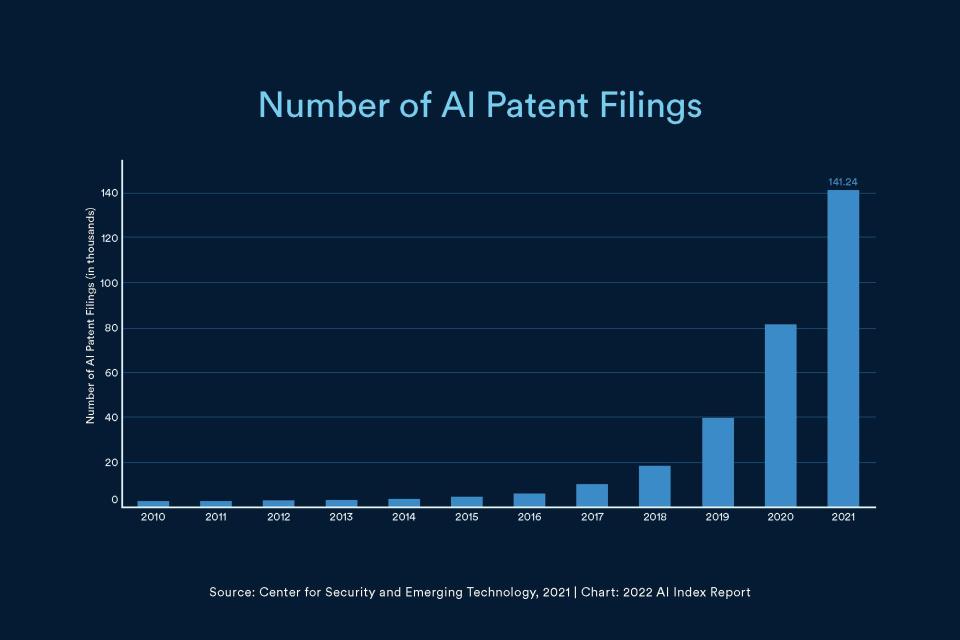
6. AI patents skyrocket
The number of patents filed in 2021 is 30x higher than in 2015, showing a compound annual growth rate of 76.9%. By region, East Asia and Pacific led the rest of the world in 2021 with 62.1% of all patent applications, followed by North America (17.07%) and Europe and Central Asia (4.16%).

7. A robot for everyone?
Robotics is becoming more accessible and affordable. The AI Index survey shows that the median price of robotic arms has decreased by 46.2% —from about $42,000 in 2017 to $22,600 in 2021.
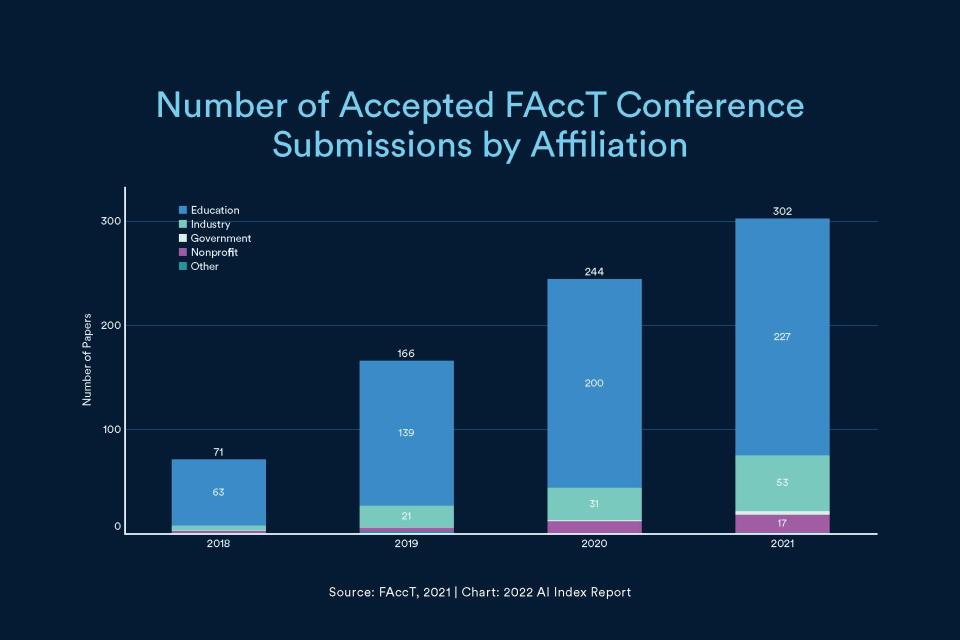
8. Scholars focus in on Fairness, Accountability, and Transparency (FAccT)
ACM FAccT is an interdisciplinary conference publishing research in algorithmic fairness, accountability, and transparency. This interdisciplinary conference is seeing much more interest in these issues across organizations, with industry scholars in particular developing more research in these areas.
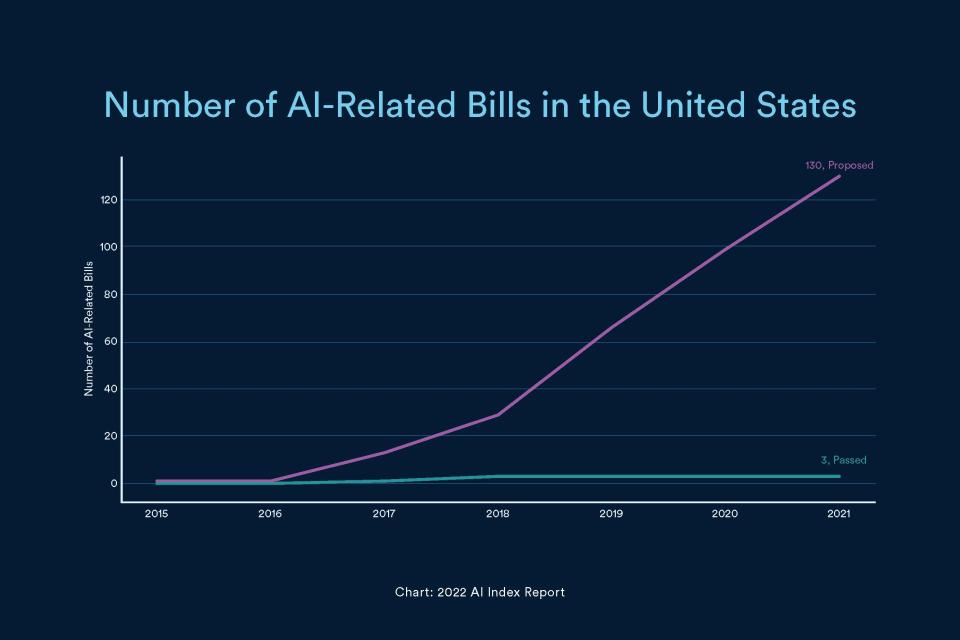
9. U.S. policy starts showing an interest in AI
In the past few years, federal lawmakers have sharply increased proposed regulations involving AI. In 2015, just one federal bill was proposed, while in 2021, there were 130. Although this jump is significant, the number of bills related to AI being passed has not kept pace with the growing volume of proposed AI-related bills. This gap was most evident in 2021, when only 2% of all federal-level AI-related bills were ultimately passed into law.
A prior version of this story had incorrect data for robotic arms costs and has since been updated.